We hope that each of you, our readers, will enjoy and appreciate this article we present about these 5 Woefully Rare Woody Shrubs. It was certainly our pleasure to gather the information for you. May it provide you with both education and increased awareness.
Certainly, these few species listed herein represent only a portion of the similar marvels around the world. It’s our belief, though, that they serve as excellent representations of the wonders that exist. Check out some of our other articles for similar marvels.
Santa Rosa Island Manzanita
Santa Rosa Island Manzanita Facts
- Leading off this compendium of 5 Woefully Rare Woody Shrubs comes the remarkable creation of Nature known as the Santa Rosa Island Manzanita.
- This intriguing product of natural evolution most frequently goes by the common name due to its habitat range. The name itself is thus quite informative. Uncommonly, this remains the only routinely used non-technical name for the species.
- Among professionals, such as researchers, it’s more typically referred to by its official name. That, however, is an extremely difficult to pronounce term for most laymen. Tht’s because it’s burdened with the official moniker of Arctostaphylos confertiflora.
- Researchers first noted the plant in 1934. It owes this tongue-twisting name to the Canadian-American botanist, Alice Eastwood. She recorded the first recognition of it as a separate and distinct species. It joins numerous other species that she identified.
- Surprisingly, though, this tantalizing marvel of biology does not presently appear on the IUCN Red List of Threatened Species. That lack of classification surprises due to several factors. These include its native range and the number of known specimens.
- That’s all true due to the fact that the Santa Rosa Island Manzanita has a severely limited range. It also has a population that consists of only a few examples found in only two locations. It does, however, list as Imperiled in the country it appears in.
- Due to these conditions, it naturally faces multiple threats to its existence as a species. In the past, imported animals, such as pigs and cattle decimated its numbers. Presently, though, its limited population renders it especially vulnerable to climate change.
Santa Rosa Island Manzanita Physical Description
The gorgeous Santa Rosa Island Manzanita fascinates most of those fortunate enough to view it. It does so for a variety of reasons. Pure physical size, however, isn’t among those traits. That’s because it ranks as smaller than average among other varieties of manzanita.
This particular woody shrub develops as an evergreen. Most specimens display a strongly winding, twisting shape. Exceptional individuals reach heights measuring up to about 6 ft (1.8 m). Most examples, however, attain significantly shorter vertical measurements.
Individual stems branch often, and display an amazing color variety. That’s true given the fact that this part of the plant appears as any shade ranging from light gray to dark red. Each branch of the species also evelops a moderately dense covering of delicate white hairs.
The foliage of the very rare Angiosperm likewise has a covering of granular bristles. In color, these small leaves generally develop as a light green shade. These also most commonly show a dull shade, not waxy, like some related species of woody shrub present.
The flowers of the lovely Santa Rosa Island Manzanita also captivate the fortunate viewer. Although these remain extremely small in size, they make up for it in appearance. The blooms have a rounded shape, appear as milky white or pale pink, and grow in large clusters.
The fruits also possess distinctive qualities. These include being of a type known as a drupe. Each further remains extremely small, measuring an average of 0.4 in (1 cm) in diameter. Even this part of the Eudicot boasts a dense covering of fine hair-like structures.
- Kingdom: Plantae
- Phylum: Angiosperm
- Class: Eudicots
- Order: Ericales
- Family: Ericaceae
- Genus: Arctostaphylos
- Species: A. confertiflora
Santa Rosa Island Manzanita Distribution, Habitat, and Ecology
The magnificent flora that is the Santa Rosa Island Manzanita evolved as native to a region of the globe already renowned for its natural beauty. Not many people currently know of its existence, though, due to the specific limitations of that same range of habitation.
That’s partly due to the fact that it evolved as native to an isolated section of the United States, in North America. That location forms part of the state of California. It lives only on the island of Santa Rosa. That itself forms part of what’s now named the Channel Islands.
Even there, though, it only appears on the lone island of Santa Rosa, as the name implies. Researchers currently have no evidence that it ever appeared outside this range. There, though, the plant inhabits either conifer forests or regions of chaparal.
It further evolved as endemic to the precise conditions found within this micro environment. This predominantly consists of a combination of fairly wet winters and moderately dry summers. It also experiences regular disturbance by wildfires.
The very nature of its habitat limits the possibilities of the Santa Rosa Island Manzanita. The mainly sandstone composition of the underlying soil limits growth opportunities. Due to this, only two widely separated populations of the species remain on the island.
Experts still know surprisingly little about its life history. It’s known that it achieves pollination via the actions of several local insect varieties. These include the honeybee and bumblebee. Fortunately, numerous hummingbirds also assist in its pollination.
Swamp Dacrydium
Swamp Dacrydium Facts
- Next up among our choices for inclusion in this article about 5 Woefully Rare Woody Shrubs we present the flora known as the Swamp Dacrydium.
- The fabulous and distinctive creation of Nature most often goes by the informative common name that we use here. Yet, the flora also possesses another, though less frequently used, moniker. That’s the somewhat unusual name of the cat-tail Rimu.
- Scientific professionals, however, such as researchers, typically refer to the species by its official, technical name. That term’s somewhat hard for the layman to pronounce, though. That’s because it bears the official name of the Dacrydium guillauminii.
- The intriguing plant further received that slightly tongue-twisiting title at the hands of the respected American botanist, John Theodore Buchholz. This noted scientist made the first formal acknowledgement of it as a separate and distinct species, in 1949.
- Regardless of which term one chooses to use for it, the remarkable conifer represents a marvel of evolution. Unfortunately, however, it seems to have a very limited presence in the wild. This also appears to hold true across the entirety of its native range.
- The IUCN, therefore, lists the Swamp Dacrydium as Critically Endangered on its Red List. It faces multiple threats, including the occurrence of frequent forest fires, and human encroachment on its habitat. It’s greatest threat, though, is from climate change.
Swamp Dacrydium Physical Description
The wondrous Swamp Dacrydium quickly fascinates those fortunate enough to encounter it. That holds true due a variety of reasons, of course, that vary between individuals. This fascination, however, occurs wholly regardless of the physical size of the Gymnosperm.
That’s true since it does not develop strictly as a tree. Instead, though it qualifies as an evergreen, it evolved as either a variety of moderate-sized shrub, or small tree. Each specimen develops slightly differently, due to variations in its precise environmental factors.
In terms of height, this marvel of Nature only reaches a maximum known size of 7 ft (2.1 m). Most individuals, though, actually remain slightly smaller than that. It further typically manifests as an erect variety, with its many branches being densely packed together.
The bark itself garners some interest due to its specific nature. This part develops as a light brown in color, with a fibrous texture. That aspect of the species also has small, scale-like structures when young. As it ages, these features evolved into many cracks and crevices.
As with many of its relatives, the leaves of the Swamp Dacrydium appear as long and quite thin. This needle-like foliage also has an extremely sharp point. These overlap thickly, but remain rather short. Each typically attains an average length of 0.5 – 0.67 in (13 – 17 mm).
- Kingdom: Plantae
- Phylum: Tracheophytes
- Class: Pinopsida
- Order: Pinales
- Family: Podocarpaceae
- Genus: Dacrydium
- Species: D. guillauminii
Swamp Dacrydium Distribution, Habitat, and Ecology
Regrettably, the Swamp Dacrydium possesses an extremely limited zone of habitation. The region of the globe in which it evolved, however, qualifies as comparatively remote. Its location lies in a small portion of the Pacific Ocean, 750 mi (1,210 km) east of Australia.
More exactly, it evolved as endemic to Grand Terre, the main island of the archipelago of New Caledonia. Intriguingly, scientific evidence indicates that it may never have existed outside of this restricted range. This, therefore, contributed to its unique development.
Even within that enormously limited zone of habitation, it has very precise requirements for its habitat. That’s because it only develops along the banks of rivers and lakes. But even there, populations only occur sporadically along the shores of these formations.
The bodies of water it appears along only lie in the southeast part of the island. It also evolved one more characteristic that distinguishes it from many, though certainly not all, evergreens. The roots of this product of countless ages of evolution grow in the water.
Overall, the total area that the remarkable Swamp Dacrydium inhabits only equals about 5 sq mi (12 sq km). Estimates further place the number of adult specimens at fewer than 100 individuals. This fact greatly inhibits its chances of successful propogation, unfortunately.
The marvelous flora also reproduces in the same manner as others of its kind. Each separate bush or tree develops both male and female seed cones. These structures range in size from 0.3 – 0.55 in (8 – 14 mm). Within each of these, Nature places no more than 5 seeds.
Wheel Flower
Wheel Flower Facts
- Appearing in the third position in this collection of 5 Woefully Rare Woody Shrubs, the beautiful Wheel Flower does so only due to random selection.
- This stunning product of evolution most frequently goes by the deceptively simple common name for good reasons. It has another english language name, though. That’s the term of the Catherine-wheel pincushion. In Afrikaans it’s called waterluisie.
- But, among scientific professionals, it’s better known by its technical moniker. But that’s a hard term to pronounce for most laymen. That’s because it bears the official title of the Leucospermum catherinae. By either of these, though, it’s a work of art.
- This wonder of Nature received that tongue-twisting formal title due to the work of Edwin Percy Phillips. He wasn’t the first to report on it. Despite that, the South African botanist recorded the first official recognition of it as a separate and distinct species.
- Sadly, the Wheel Flower appears to be dwindling in numbers in the wild. It also has a highly fragmented concentration. Both these lamentable conditions seem to hold true throughout the entirety of its range. The IUCN therefore lists it as Vulnerable.
- Habitat degradation and loss pose considerable threats to it, given that fragmented range. Both these arise due to the actions of humans. Its now also faces another danger created by the actions of man. That’s because it’s now vulnerable to climate change.
Wheel Flower Physical Description
The stunning Wheel Flower is one of those plants that capture the imagination. Unlike some varities of flora, though, it does so for more than one reason. It combines a distinctive appearance with sheer beauty, for one. Yet it’s also a relatively large species.
It develops as a comparatively large, upright shrub. It also evolved as evergreen in nature. At full growth, individuals specimens sometimes attain heights of as much as 13 ft (4 m). Subsequent to this, though, most members of the species begin to spread outward.
This marvelous Angiosperm grows from a single, thick trunk at the base. The many branches each plant produces generally grow upright. These average 0.2 – 0.3 in (5 – 8 mm) in thickness. Intriguingly, each of them also manifests a covering of a thin, downy nature.
The leaves of the beautiful species develop at the end of a relatively thick stalk. This grows in an inverted state, and with a lance-like shape. This foliage averages 3.5 – 5.1 in (9 – 13 cm) in length. This growth further has a wdith that ranges from 0.4 – 1.0 in (1 – 2.5 cm).
Yet it’s clearly the blooms of the breathtaking Wheel Flower that rightfully garner the most attention. They become disk-shaped with maturity, and reach an impressive typical width of 5.9 in (15 cm). Its general structure, though, cloely resembles long, thin curved needles.
Their coloring creates a magnificent treat for the eyes. Each thin needle-like bract presents a vivid orange shade along its length. The tip of each displays a contrasting dark orange hue. These grow out from the base, before curving back inward to create a striking shape.
- Kingdom: Plantae
- Phylum: Tracheophytes
- Class: Eudicots
- Order: Proteales
- Family: Proteaceae
- Genus: Leucospermum
- Species: L. catherinae
Wheel Flower Distribution, Habitat, and Ecology
Unfortunately for those who love Nature, the Wheel Flower evolved as native to a very limited range. The region of the globe where that zone of habitation lies, however, likely comes as no surprise. That’s since this botanical marvel is native to the continent of Africa.
Even there, though, it only appears in a very small portion. All known specimens of the plant grow only in a section of the country of South Africa. More precisely, it lives in a region to the southwest of the Western Cape province. Yet even there it lives in isolated groups.
In the few regions where it does appear, though, it displays very decided preferences for its choice of habitat. It also displays a strong favoritism for moist areas. These mostly consist of such regions as either level sandy flats or weathered table mountain sandstone.
It also frequently likes to make its home along the banks of permanent streams. The stunning species further displays a preference for a range of altitudes. That’s true since all known examples of it grow at altitudes ranging from 2,000 – 3,900 ft (610 – 1,189 m).
The native climate of the Wheel Flower remains nearly Mediterranean in nature. This includes copious rainfall, hot summers, and moderately cold winters. The marvelous flora tolerates temperatures down to the freezing point, but does not do well below that point.
Although many bees are attracted to it, they’re not its principal pollinators. It actually achieves the majority of its pollination via the actions of birds. They’re bodies collect the pollen when they feed on the nectar, and they later transfer it to the next plant they visit.
Munchkin liveforever
Munchkin liveforever Facts
- Next up in this listing of 5 Woefully Rare Woody Shrubs we give you the eternally charming plant known as the Munchkin liveforever.
- This intriguing creation of evolution really does most commonly goes by this attention-grabbing moniker. The species does have other names, though. Some people also know it by the related, and almost as interesting, term of the munchkin dudleya.
- Among scientific professionals, however, it’s likely better known by its official name. The plant’s therefore bettern known by these experts by the name of Dudleya gnoma. Regardless of which one uses, it remains a species of some interest and note.
- The succulent owes that formal name to the respected American botanist, Stephen W. McCabe. This researcher accomplished the first official recognition of the plant as a separate and distinct species. That scientifically noteworthy feat ocurred in 1997.
- Unfortunately, the fascinating plant possesses both an extremely limited population and native range. Despite this lamentable fact, however, it does not currently appear on the Red List of Threatened Species. The IUCN could change that in the future, though.
- The stunning Munchkin liveforever does, however, appear on other official, specialized lists. These lists appear within the country the Angiosperm inhabits. The government of that country presently lists this botanical wonder as Critically Imperiled.
- This natural marvel continues to face several threats to its continued existence. Like most other species around the globe, it’s now endangered by ongoing climate change. Other, more highly localized threats include native deer and plant poachers.
Munchkin liveforever Physical Description
The visually distinctive Munchkin liveforever easily garners the attention of those fortunate enough to encounter it. It does not do so due to sheer size, however. That’s because, despite its other impressive attributes, it remains a comparatively small succulent.
That’s true since individual specimens rarely exceed 3.9 in (9.9 cm) in width. The small flowering stalk, technically known as a peduncle, also rarely attains a height greater than 5.12 in (13 cm). This upward grwoing feature typically branches no more than two times.
The main body of the Eudicot consists of tightly wound clumps of rosettes. These generally number between 1 – 24 on each specimen. Each of these further typically measures from 0.3 – 2 in (0.8 – 5 cm) in width. This portion of the plant usually manifests a varying pale shade.
The very same rosettes also most often develop around 20 leaves spread around the clump. These leaves generally display a white color, and have a fleshy, triangular shape. Each example of the remarkable foliage also presents a waxy, powdery coating which it exudes.
The flowers of the surprising Munchkin liveforever also garner a great deal of attention. Quantities vary from specimen to specimen, of course, but may total as many as 10. These develop at the ends of sterms so short they can be difficult to spot with the naked eye.
Its delicate blooms develop petals that appear a bright yellow in color. These measure from 0.31 – 0.35 in (8 – 9 mm) in length, and average 0.12 in (3 mm) in width. Each also produces sepals averaging 0.14 – 0.16 in (3.5 – 4 mm) long and 0.08 – 0.12 in (2 – 3 mm) wide.
- Kingdom: Plantae
- Phylum: Tracheophytes
- Class: Angiosperms
- Order: Saxifragales
- Family: Crassulaceae
- Genus: Dudleya
- Species: D. gnoma
Munchkin liveforever Distribution, Habitat, and Ecology
Sadly, the astounding Munchkin liveforever appears to have an extremely limited range of habitation. That’s due to the fact that the only known habitat of this plant comprises one single island. Even there, though, it only exists in one small, very specific area.
The succulent makes its home solely on part of Santa Rosa Island. This, in turn, forms part of the Channel Islands of California. This location naturally places it within the boundaries of the United States, in North America. There, it lives on a single ridge, on the eastern side.
It’s currently unknown, however, if it ever appeared anywhere else. The very nature of its habitat tends to restrict its possibility of expansion, though. Probably due to its isolation, it evolved to thrive best in an extremely specific, and uncommon, type of environment.
For its needs, it requires rocky soils, with a volcanic origin. Further complicating its opportunities for expansion is the fact that it also needs that soil to be relatively shallow in depth. Though it’s kept in cultivation by enthusiasts, this need renders it hard to maintain.
The marvelous Munchkin liveforever typically produces its colorful blooms between May and June. Pollination of those flowers occurs due to the actions of a wide variety of local insects. Like many such species, these include various species of bee, beetles, and others.
The distinctive name springs from the comparative longevity of individual specimens. Despite that, its entire population in the wild appears in only 3 small concentrations. The most recent count of its numbers by researchers numbered no more than 3,200 specimens.
Gibralatar Campion
Gibraltar Campion Facts
- Closing out this compilation of 5 Woefully Rare Woody Shrubs is the intriguing product of evolution best known as the Gibraltar Campion.
- This delicate yet gorgeous plant remains best known by the name used here. The marvelous flower also has a true story to tell. That’s true since, among other things, this stunning work of Nature currently ranks as one of the rarest of all known plants.
- The species also goes by the less pronounceable scientific name of Silene tomentosa. Regardless of its name, one thing stands out. In fact, this marvelous little beauty remains so rare that, by the year 1992, experts believed it to be extinct.
- Later, however, in 1994, a most fortuitous, at least for botanists and those who appreciate Nature, event occurred. That’s because, at that time, researchers accidentally rediscovered the remarkable species still living in the wild.
- But, the truly gorgeous Gibraltar Campion nevertheless remains exceedingly rare in its natural habitat. Thankfully for the species, however, as well as those who appreciate Nature, botanists succeeded in propagating a few specimens.
- As a result of their painstaking efforts, these now exist at the Gibraltar Botanic Gardens. This magnificent variety of flora presently, and quite understandably, holds an official status as an Endangered Species. This appears on the IUCN Red List.
Gibraltar Campion Physical Description
The Gibraltar Campion classifies as a woody-based perennial plant. This occurs due to its genetic structure, which may surprise some amateur researchers. Yet, the flower holds this status despite the fact that the marvelous species strongly resembles a small flower.
It also remains small in terms of physical size. In this manner, it proves that plants can be impressive in appearance, regardless of size. Plus, the plant attains a maximum height of about 16 in (40 cm). The great majority of individuals remain much smaller than this, though.
The small, two-lobed flowers of the Gibraltar Campion also merit appreciation. These commonly present a variety of colors to dazzle the eye. These delicate blooms range from a very pale pink to a pale violet in color. As a result, the effect can be quite striking.
- Kingdom: Plantae
- Phylum: Angiosperms
- Class: Eudicots
- Order: Caryophyllales
- Family: Caryophyllaceae
- Genus: Silene
- Species: S. tomentosa
Gibraltar Campion Distribution, Habitat, and Ecology
Clearly, the common name of the Gibraltar Campion tells one where to find it. This delicate little beauty lives in only one highly restricted location in the world. That extremely limited range consists of only Gibraltar Rock, located in the United Kingdom, in Europe.
Even there it surprises researchers. This plant also has a highly restricted, specific, and unexpected habitat preference for where it lives. Due to this, the breathtaking flowering plant lives only on the extremely rocky, otherwise desolate, outcrops of Gibraltar Rock itself.
Sadly, scientists still know very little about the ecology of this variety of flora. This lack understandably occurs due to the simple fact of having so few specimens to study. However, efforts to fathom the secrets of the magnificent Gibraltar Campion remain ongoing.
Thankfully for the few remaining wild specimens, it now has a measure of legal protection. The local government passed the Nature Protection Act in 1991. This measure serves to provide the perilously positioned plant with at least a modicum of legal protection.
5 Woefully Rare Woody Shrubs
We hope that each of you completely enjoyed reading, and hopefully learning from, this article we’ve written about these 5 Woefully Rare Woody Shrubs. It’s also our hope that doing so has left you with either a new or renewed appreciation for such wonders of Nature.
Unfortunately, however, many of their kindred around the world now find themselves facing strong threats to their continued existence as a species. Many of those dangers, in fact, stem from the actions of mankind. We must do all we can to protect and preserve them all.
Check out our other articles on 3 Tantalizing Wonders of Tanzania, Africa’s Many Geological Masterpieces, 5 Beautiful North American Butterflies, 4 Magnificent Birds of Mexico
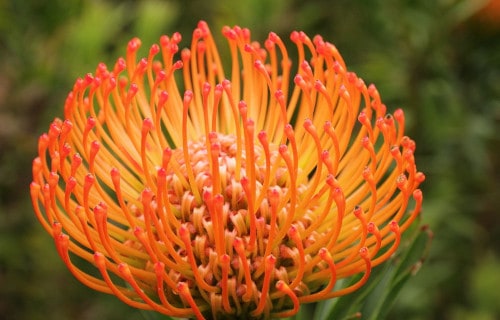
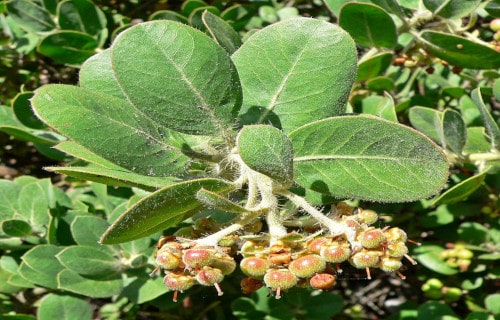
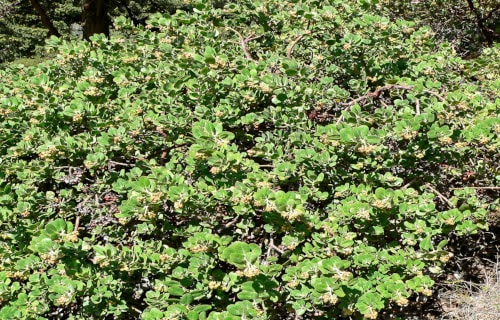
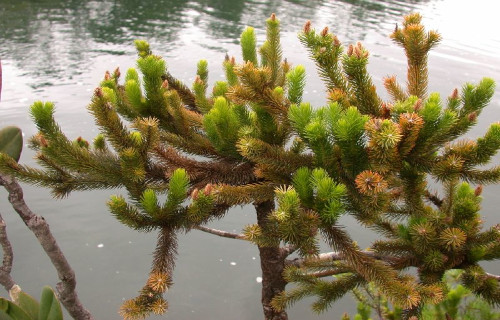
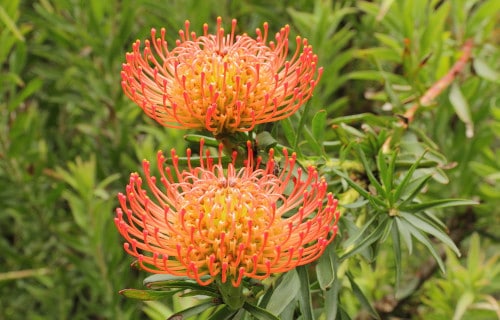
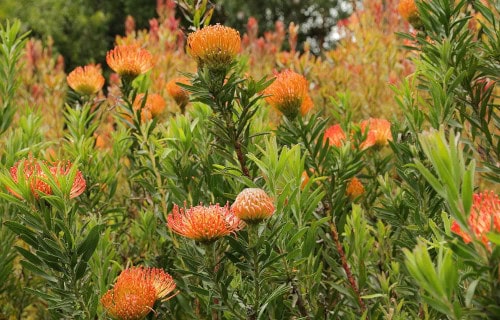
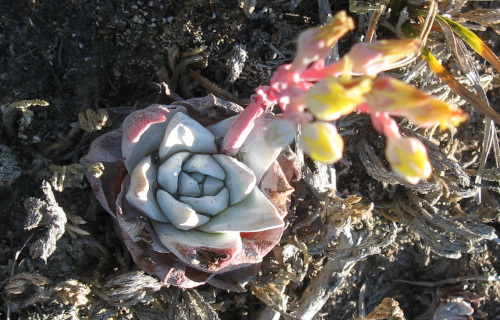
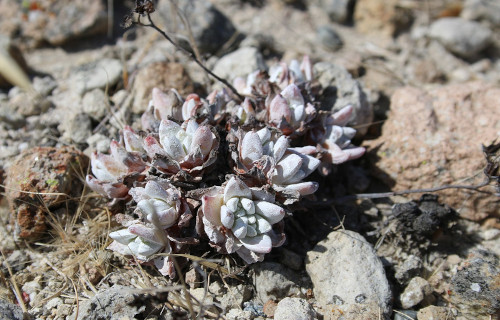
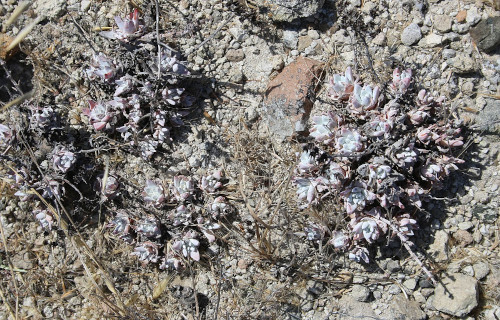
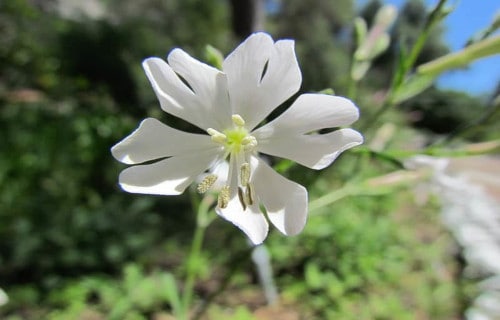
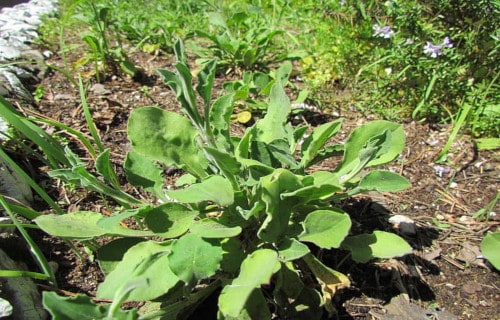









Leave a Reply